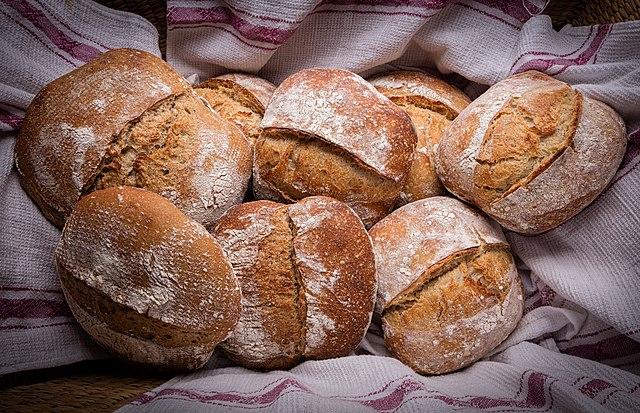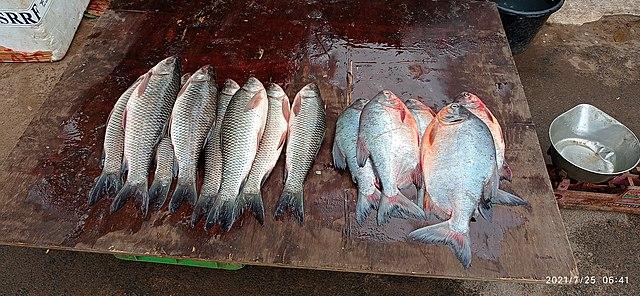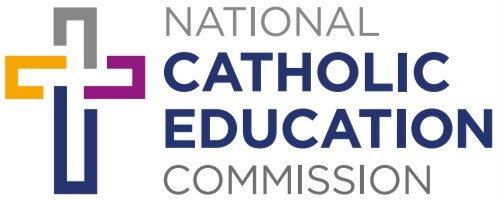Jesus Feeds the Five Thousand
13 When Jesus heard what had happened, he withdrew by boat privately to a solitary place. Hearing of this, the crowds followed him on foot from the towns. 14 When Jesus landed and saw a large crowd, he had compassion on them and healed their sick.
15 As evening approached, the disciples came to him and said, “This is a remote place, and it’s already getting late. Send the crowds away, so they can go to the villages and buy themselves some food.”
16 Jesus replied, “They do not need to go away. You give them something to eat.”
17 “We have here only five loaves of bread and two fish,” they answered.
18 “Bring them here to me,” he said. 19 And he directed the people to sit down on the grass. Taking the five loaves and the two fish and looking up to heaven, he gave thanks and broke the loaves. Then he gave them to the disciples, and the disciples gave them to the people. 20 They all ate and were satisfied, and the disciples picked up twelve basketfuls of broken pieces that were left over. 21 The number of those who ate was about five thousand men, besides women and children.
New Revised Standard Version Bible: Catholic Edition, copyright © 1989, 1993 the Division of Christian Education of the National Council of the Churches of Christ in the United States of America. Used by permission. All rights reserved.
What to do with this educator’s commentary
This commentary invites you as a teacher to engage with and interpret the passage. Allow the text to speak first. The commentary suggests that you ask yourself various questions that will aid your interpretation. They will help you answer for yourself the question in the last words of the text: ‘what does this mean?’
This educator’s commentary is not a ‘finished package’. It is for your engagement with the text. You then go on to plan how you enable your students to work with the text.
Both you and your students are the agents of interpretation. The ‘Worlds of the Text’ offer a structure, a conversation between the worlds of the author and the setting of the text; the world of the text; and the world of reader. In your personal reflection and in your teaching all three worlds should be integrated as they rely on each other.
In your teaching you are encouraged to ask your students to engage with the text in a dialogical way, to explore and interpret it, to share their own interpretation and to listen to that of others before they engage with the way the text might relate to a topic or unit of work being studied.
Structure of the commentary:
The world of the author’s community
The world at the time of the text
Questions for the teacher
Text & textual features
Characters & setting
Ideas / phrases / concepts
Questions for the teacher
The world in front of the text
Questions for the teacher
Meaning for today / challenges
Church interpretations & usage
The World Behind the Text
See general introduction to Matthew.
Unsurprisingly for Matthew, this passage hints strongly of Old Testament events, characters and beliefs:
- Moses and the feeding in the desert (Exodus 16 and Numbers 11),
- Elisha, an early prophet, who, in an episode very like the Feeding of the 5000 multiplied food for the hungry (2 Kings 4:42-44)
- hopes for the Messianic kingdom – shown in images of a lavish feast with limitless food and drink
- Isaiah, later prophet, telling of God providing a ‘lavish banquet for all peoples’, and caring for them (Isaiah 25:6);
- Psalm 23 – God providing food, in a grassy, verdant setting;
- Other examples Isaiah 55:1-2; Joel 2:24:26; Psalm 63:5; Psalm 107:9; Ezekiel 34:14
Within the Gospels, this miraculous event of the bread and fish has extraordinary prominence. It is in both Mark and Matthew’s gospel twice; once 5000 are fed, once 4000. In one account 12 baskets of food are left over, in the other 7 baskets remain. Most scholars see the two account as written for different communities:
- The one set on the western shore of the lake, with 12 baskets of left-over bread is probably intended to speak to a Jewish tradition (12 tribes leading to 12 disciples),
- The second seems to be set on the eastern shore of the lake and has 7 baskets left over, possibly intended for a Greek/Gentile community where 7 deacons were appointed to serve the community). [p. 1633, New Jerusalem Bible, DLT, 1994]
Both Luke and John only include the event once each.
The world of the text
Text & textual features
Scholars note that Matthew’s Gospel is broken into 5 discourses, or books, mirroring the structure of the Torah. This text is in the third section, or book, the section concerned with parables of the kingdom and the disciples coming to acknowledge Jesus as the Messiah.
Chapter 13 has introduced several parables of the kingdom, many showing its growth and development, so that like the seeds, it becomes a ‘hundredfold’ of what it was. This passage now goes on to show this in practical terms: how might this growth occur?
The literary form of Matthew 14:13-21 is a miracle story.
A miracle story is a type of narrative with a beginning, middle (and complication) and resolution. Miracle accounts are defined as those in which actions which deviate from what is expected, occur: miracles can be either the healing of someone which occurs miraculously, or a nature miracles where the natural events of life are disturbed or interrupted by divine intervention.
The text begins with news of the death of John the Baptist at the beginning of chapter 14. When Jesus heard this news ‘he withdrew … to a deserted place…’
Matthew doesn’t explain any more than that. Was Jesus wanting to gain some respite from the hostility, or to mourn the loss of John? Or is Matthew’s placing of this passage to show, again, that John’s role was that of precursor. That role completed, Jesus can now become the bread and wine, the miracle of growth?
Matthew mostly follows the order and structure of Mark from whom he gets this passage.
Matthew follows Mark to say that Jesus feels compassion for the crowd; Matthew adds that Jesus heals them.
Matthew records the disciples wanting to send the crowd away to buy food but he presents the disciples in a better light than in Mark (6:30-44), removing reference to their irritation at seemingly being asked to spend 200 denarii, (denarius – a day’s wage) on purchase of bread themselves.
Both writers record Jesus’s action similarly, on receipt of the bread.
Characters & setting
Jesus, the disciples and crowds of people – presumably, men, women and children.
They are on the shore of Lake Galilee: a ‘deserted’ place – most likely to remind the readers of their time of hunger in the desert in the Exodus journey. When the Israelites needed food, God provided it. Now, in need, Jesus will provide.
Matthew will forget the notion of desert when he tells the crowd to sit ‘on the grass’!
Ideas/phrases/concepts
Bread

Bread was, and is, a staple of life, baked every day, and a significant portion of the food eaten each day. Bread came in two forms: barley and wheat. Ordinarily it would have been baked with yeast.
Fish

Fish and fishing were the life-blood of life near Lake Galilee. Fish were caught on the Lake and dried and sold in the villages around the lake. Magdala was well known for its preparation of fish for sale. Jesus called his first disciples from the Lake (Matt 4:19), he taught on the shores of it and use the imagery of fishing often in his teaching. The Greek word for fish, ichthus, was used as an acrostic poem by the early church: ‘Jesus(I) Christ(ch) of God(th) Son(u) Saviour(s). (Michael Fallon, Gospel of Matthew, online PDF, p. 213).
Blessed
Matthew tells us that Jesus ‘looked up to heaven’, ‘blessed’ and ‘broke’ the loaves, and ‘gave them to the disciples’ to give them to the crowds. The words describing Jesus’ actions are typical of all Jewish meals with the giving of thanks, the blessing and the breaking and finally the sharing. These actions will appear again in the account of the Last Supper (Mt 26: 17-29) so this passage alludes to what is to come.
In this miracle story, Jesus is the one who can satisfy deep hunger.The fact that it is in all four gospels, points to the importance of this tradition in the early Christian community, and that the message was applicable to all regions of early Christianity.
Questions for the teacher:
The world in front of the text
Questions for the teacher:
Please reflect on these questions before reading this section and then use the material below to enrich your responsiveness to the text.
Meaning for today/challenges
At a literal level this event links strongly to the celebration of the Eucharist, where the Priest not takes, blesses, breaks and shares the bread. At a spiritual level, both the characters and the actions can be interpreted symbolically.
We are all invited to act in response to the needs of ‘the crowds’ we come across, to respond to to the ‘hungers’ before us, to find within us what people need to be fed and nourished.
What does it mean to respond, with compassion, to those who hunger and are in need?
What does it mean to offer healing to those who come to us?
Do we act like the disciples, and note that we do not have the means to fulfil the need in front of us?
We are also invited to contemplate this reading and to recognise what we have; to take it, recognise God’s blessing in it, and then share it with others. There will be sufficient to meet the needs of God’s people.
How can we move beyond tentativeness in responding to the needs of others, the needs of the deprived, the lonely, the sick and helpless?
We have ‘the bread’ to meet these needs.
Church interpretation & usage
This miracle of the loaves and fishes has always been seen as looking forward to the Eucharist and, ultimately, to the final banquet in the kingdom of God. Australian scripture scholar Brendan Byrne SJ, describes it as both a foretaste and prefigurement of the Eucharist’” (Lifting the Burden, p. 118, St Pauls Publications 2004).
This gospel used in Year A on the 18th Sunday of Ordinary Time, along with Isaiah 55:1-3 and Romans 8:35, 37-39.
